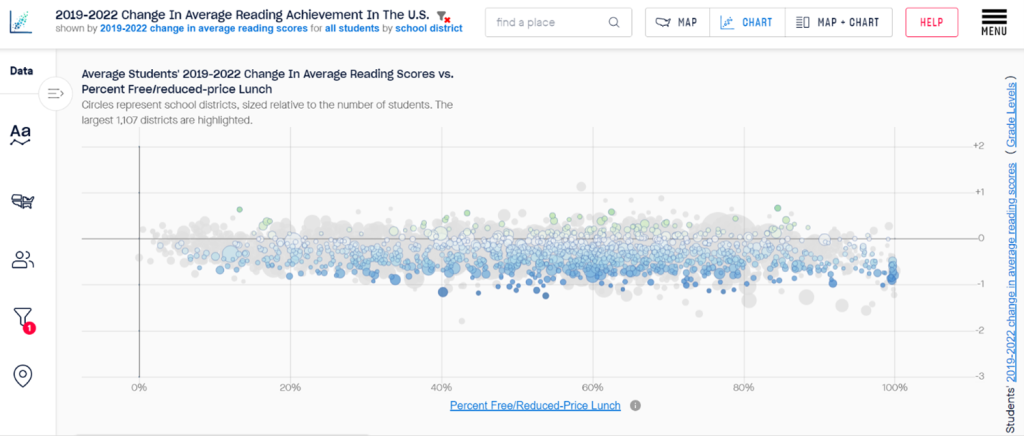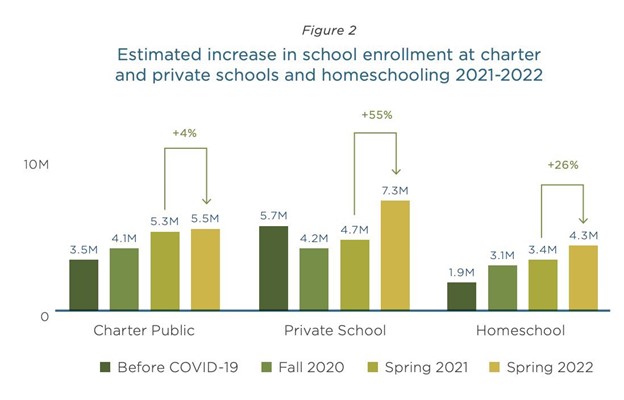
American K-12 education was doing quite poorly before the advent of the COVID-19 pandemic. In comparisons to other nations on international exams, American schools spent lavishly but scored poorly. Now matters are worse. The Stanford Educational Opportunity Project recently measured change in reading scores by school district between 2019 and 2022. The below chart plots reading achievement, green is good, blue is bad, and blue dominates green, and the mathematics chart is even worse:

America’s shambolic public health response to the COVID-19 pandemic greatly increased demand for education options outside the districts. Tyton Partners measured which sectors met how much increased demand:

Tyton Partners estimate that between the Spring of 2021 and the Spring of 2022, charter schools increased enrollment by 200,000 students, private schools by 2.5 million students and home schools by 900,000 students. Charter schools have led the way with enrollment growth for decades, raising the question: Is this trend a passing cloud or a long-term shift?
I’m placing my bet on a long-term shift.
Charter schools face a variety of practical and political challenges. Practical difficulties include increased interest rates, building supply chain issues, and construction labor shortages. Political difficulties include increased general political polarization and a Baptist and Bootlegger self-own. Circumstances will vary considerably by state, but if you add it all up, the outlook looks challenging for charter school growth.
Private and home schools by contrast require little in the way of permission by public authorities when compared to charter schools. No statutes create caps for the number of private or home schools; no boards decide which schools may open or which must close. When a pandemic-fueled demand shock came, permissionless education systems answered the call.
The COVID-19 pandemic popularized a Do It Yourself (DIY) education movement. Americans take cues on schooling from friends, families, and social networks. More people doing DIY recently seems likely to lead to still more DIY in the future.
Stay tuned to this space in 2023, and we’ll explore further the long-term shifts taking place in full view of the world. Happy holidays!


